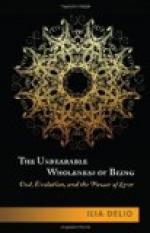once and for all. There was nothing more to be
discovered, and therefore scientists took a delight
in logical and dialectical speculations which to a
man of our day seem senseless and childish. Far
into the Renascence, natural history was a medley
of ancient traditions, oriental fables and superficial
observations. The strangest qualities were attributed
to animals with which we come almost daily into contact.
The following quotations are culled from a Provencal
book on zoology: “The cricket is so pleased
with its song that it forgets to feed and dies singing.”
“When a snake catches sight of a nude man, it
is so filled with fear that it does not dare to look
at him; but if the man is dressed, the snake looks
upon him as a weakling and springs upon him.”
“The adder guards the balsam; if a man desires
to steal the balsam, he must first send the adder
to sleep by playing on a musical instrument. But
if the adder discovers that it is being duped, it
closes one of its ears with its tail and rubs the
other one against the ground until it is filled with
earth; then it cannot hear the music and remains awake.”
“Of all animals there is none so dangerous as
the unicorn; it attacks everybody with the horn which
grows on the top of its head. But it takes such
delight in virgins that the hunters place a maiden
on its trail. As soon as the unicorn sees the
maiden, it lays its head into her lap and falls asleep,
when it may easily be caught.” Of the magnet
we learn among other things that it restores peace
between husband and wife, softens the heart of all
men and cures dropsy. “If a magnet is made
into a powder and burnt on charcoal in the four corners
of the house, the inhabitants imagine that they cannot
keep on their legs and run away, sorely affrighted;
thieves frequently profit by this fact. If a magnet
is placed under the pillow of a sleeping woman, she
is compelled, if she is virtuous, to embrace her husband
in her sleep; if she has betrayed him, she will fall
out of her bed with fear.”
All this information was the common property of the
period; Richard of Berbezilh, for instance, an “aesthetic”
troubadour, tells us that—like a still-born
lion’s cub which was only brought to life by
the roaring of its dam—he was awakened
to life by his mistress. (He does not say whether
it was by her roaring.) Conrad of Wuerzburg compares
the Holy Virgin to a lioness who brings her dead cubs,
i.e., mankind, to life with loud roaring.
Bartolome Zorgi, another troubadour of the same period,
likens his lady to a snake, for—he explains—“she
flees from the nude poet and her courage only returns
with his clothes.” During the whole mediaeval
period the unicorn was a well-known symbol of virginity,
more especially of the virginity of Mary. The
Golden Smithy of the German minnesinger, afterwards
monk Conrad of Wuerzburg, contains a rather abstruse
poem which begins:
The hunt began;
The heavenly unicorn
Was chased into the
thicket
Of this alien world,
And sought, imperial
maid,
Within thine arms a
sanctuary.... etc.




